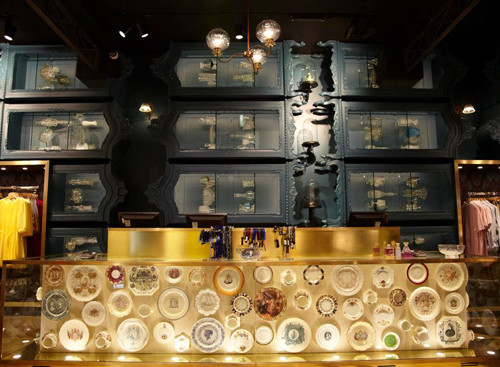The recent news that Ted Baker is using beacons for the first time in its Westfield London store comes as no surprise to anyone working in proximity marketing. Fashion brands, possibly more than any other sector, are going to benefit hugely from delivering highly relevant, often more personalised communications direct to the consumer when they are in-store. But that doesn’t mean the methods are exclusive to that industry.
Here are some of the ways that fashion retailers will be using proximity to improve their mobile offering to enhance the customer’s experience in-store that could be deployed by other retailers:
1 – Trending and other content
Fashion is a transitory subject so probably benefits most from telling in-store shoppers what is trending that day or week, locally and nationally. But other retailers can also use proximity and trending to great effect. Knowing a customer is near the red meat section in a supermarket, trending recipes can be served-to and saved directly on their smartphone.
Likewise, a virtual catwalk isn’t exclusive to a designer brand. An interactive demonstration of car features in a showroom can also be triggered by beacons, simply by moving near each model. When aligned with known preferences, say safety or performance data, the content can be personalised.
2 – Online-to-offline
It’s possible to integrate online browsing data into an app experience. So if a consumer has looked at a handbag five times online but not purchased, when in-store they can be directed to that same handbag, with turn-by-turn navigation made possible by proximity beacons. Exactly the same functionality could be used by large store such as department stores, furniture and even DIY sheds to take the consumer direct to the department, aisle or even shelf they need.
3 – Tap-n-go
We’ve already got click-n-collect. With mobile payment solutions and the possibility of using beacons for security tracking, retailers can now look to reducing queuing times and at some point in the future, dispensing with tills altogether to free up more retailing space. In a few taps, a beacon-enabled app can take the payment and inform the store which address to deliver the items to.
This may not actually be led by fashion retailers, in fairness, as there is a difficult-to-deny pleasure in showing the world where you’ve been shopping. But retailers with large and/or heavy items should be looking very closely at implementing tap-n-go for a distinct competitive advantage.
4 – Come back soon
It’s early days and there inevitably will be some marketing departments that insist on annoying the leaving visitor with ‘We hope you enjoyed your visit’ messages. Better instead to quietly drop some points into their rewards account, as a simple thank you for taking the time to come in store, especially if they’ve tried on a few items that didn’t fit this time.
It doesn’t matter that they didn’t spend anything today, this kind of location-focussed engagement will become de-facto in the near future.
5 – Better stores
Apps detecting in-store beacons, especially in larger stores, are capable of generating lots of in-store insight – on shopper’s movement patterns, dwell times, hot and cold spots and more. This will be used to optimise store layouts and designs and even inform staffing and stock levels.
Of course, technology exists to do this already, but it’s expensive. Any decent proximity marketing platform will actually be generating the data anyway, the best ones carving it into useful chunks of data that can throw up all sorts of insight. In a fashion sense, this could explain why a dress that sells well online fairs less well in-store or in a non-fashion sense why it’s not a good idea to block an aisle with a hastily-conceived baked beans promotion. Most of the brands we speak to are as interested in the data as they are in the ability to engage customers in-store.
For the moment, it’s my betting that Ted Baker will simply be using its beacons to serve up vouchers and other promotions, and count app users who come in store. It’s also my bet that this will be a long-term punt and that they are not just doing this because beacons are trendy. Proximity may be fashionable, but there are plenty of reasons why it’s here to stay.
A white paper on how the fashion industry will be using proximity marketing networks has just been published at http://airspace.cc/research






